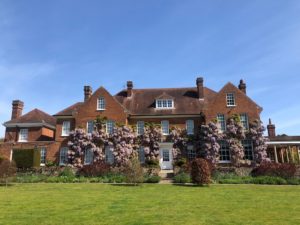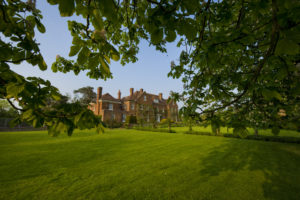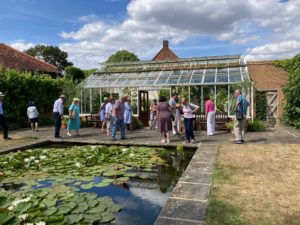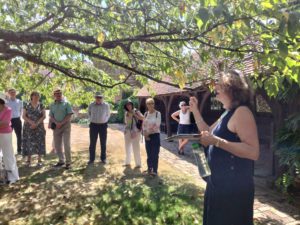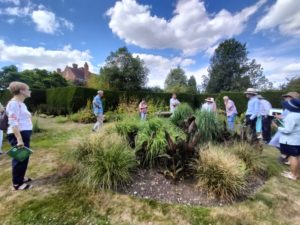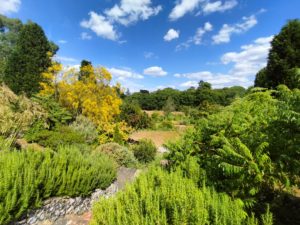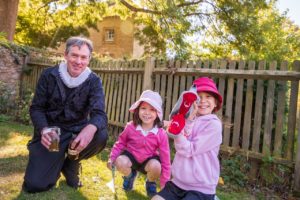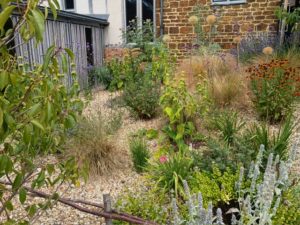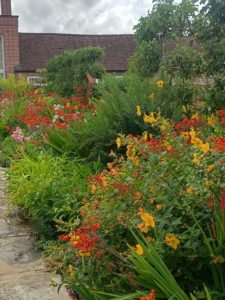A country residence of British politicians since 1955, Dorneywood was previously the home of the High Sheriff of Buckinghamshire, Lord Courtauld Thompson, who purchased the property from the Parker family in 1919. Originally a farmhouse with several timber framed outbuildings, the house was rebuilt in 1920 after being severely damaged in a fire, and is mainly Edwardian in style. It is surrounded by 6 acres of gardens and sits within a 280-acre estate of arable land.
With no heirs to succeed him, Courtauld Thompson offered the property to the National Trust in 1942. A key condition of his bequest – that Dorneywood be held as a ministerial residence – was agreed with Winston Churchill, Prime Minister. When Courtauld Thompson died in 1954 and the estate passed to the National Trust, the first ministerial occupant of the house was Anthony Eden (then Foreign Secretary). A number of subsequent Foreign and Home Secretaries were granted use of the house until the 1990s, when it first became the official country home of the Chancellor of the Exchequer, a tradition that now seems established.
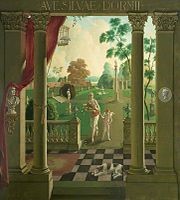 Today, the house is run by the Dorneywood Trust (under a National Trust tenancy) and we were given a very entertaining and warm welcome by Sue Saville, Secretary, along with Carole Ambrose, the housekeeper. We visited four main rooms on the ground floor – the spacious old entrance hall (which today serves as the dining room), the drawing room, the study and the music room (a single-story extension to the house constructed after the fire). These rooms were furnished in a traditional country-house style, with fine antique furniture from Lord Courtauld Thompson’s time, his books, tapestries, porcelain and art, including a View from the Terrace by Rex Whistler. There were some later additions of furniture from the National Trust’s own collections and paintings from the Government Art Collection.
Today, the house is run by the Dorneywood Trust (under a National Trust tenancy) and we were given a very entertaining and warm welcome by Sue Saville, Secretary, along with Carole Ambrose, the housekeeper. We visited four main rooms on the ground floor – the spacious old entrance hall (which today serves as the dining room), the drawing room, the study and the music room (a single-story extension to the house constructed after the fire). These rooms were furnished in a traditional country-house style, with fine antique furniture from Lord Courtauld Thompson’s time, his books, tapestries, porcelain and art, including a View from the Terrace by Rex Whistler. There were some later additions of furniture from the National Trust’s own collections and paintings from the Government Art Collection.
Once outside again, we were given a tour of the gardens by Sean Walter from the Plant Specialist Nursery (Great Missenden). With only one long-standing permanent gardener on the payroll (Andrew), Sean oversees some of the planting and maintenance of the gardens today with the help of a number of volunteers. The gardens have a strong framework which is maintained as it was in Lord Courtauld Thompson’s time, but the planting has been adapted to suit drier conditions and to provide year-round interest.
We entered the gardens through ‘The Street’, wide planted borders on either side of a brick path leading away from two old cottages, a short distance from the front door of the house. Next came ‘The Lily Pond’, introduced about 20 years ago, near a modern greenhouse filled with fan-trained nectarines and apricots. Here, the hard lines were softened by planting Hackonechloa grasses.
Passing an old rustic wooden shed which was the apple store, we moved on to ‘The Orchard’ where, in a wildflower meadow with fruit trees there were also a number of beehives. Turning a corner, we came to ‘The Dell’ where we admired a magnificent and exceptionally large Genista in bloom. Once an old clay pit, this low-lying area afforded wonderful views back up to the house. Passing through ‘The Old Rose Garden’ where the roses have now been replaced with shrubs in various shades of yellow and orange, we completed the loop to the front lawn of the house in time for tea with delicious home-made cakes.
We conveyed our thanks to all the staff at Dorneywood for a wonderful and memorable visit.
Photographs: Gemma Kirk-Stretton( Steward at Dorneywood), Letitia Letman and Claire de Carle

